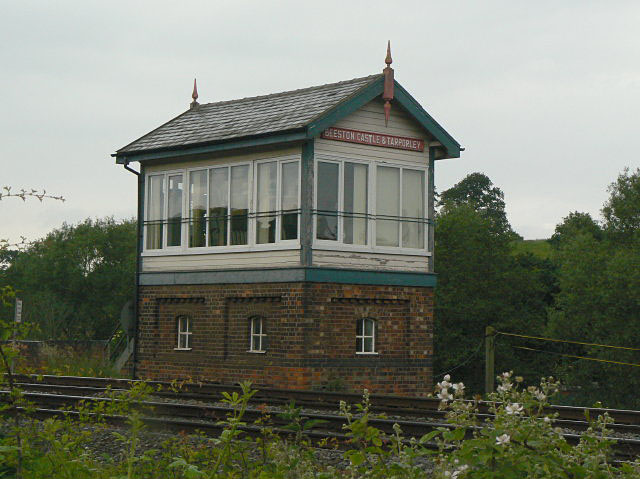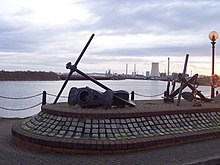I thought I had done an update since Barbridge but obviously not.
18 April
Decided to explore a bit of the Chester canal before finding moorings for my visit home. Travelled down 5 locks, including the Bunbury staircase - my first staircase locks, even though there are only two of them. I had forgotten how much more difficult broad locks are when on one's own!
I was getting a bit tired and cold so moored just below Beeston Iron lock.
This lock is unusual in that it is built of iron rather than the conventional
stone or brick.
This
lock, dated 1828, replaced the original lock which had collapsed due to
unstable sand at the site in 1797
The warning notice is rather daunting!
There is no ladder up the side. Not a problem going down but it was going to mean hauling the boat in on my way back up, including getting the rope under the bridge at the lock entrance - will not be easy.
 Not a brilliant mooring with no phone signal and quite a busy railway line nearby but there was a village shop indicated in Nicholsons guide and it was near enough to be able to walk to the ruined Beeston Castle from which the views are supposedly magnificent.
Not a brilliant mooring with no phone signal and quite a busy railway line nearby but there was a village shop indicated in Nicholsons guide and it was near enough to be able to walk to the ruined Beeston Castle from which the views are supposedly magnificent.
The original signal box is all that is left of the station which used to be here.
19 APRIL
Walked up to the village shop - it looked as though it had been closed for at least 5 years! So had quite a pleasant all day breakfast in the not originally named Lock Gate Cafe. There are some huge, mostly underground, oil bunkers dating from the war just behind the railway line but I could not find a way to get to them.
After studying maps and looking on the internet I realised I was still a fair bit from the castle and would have to go down another lock, over a mile walk and a large hill to climb to get to the castle so decided to turn round and make my way back up towards the Llangollen junction where I am intending to head next. There were also no shops nearby and I was getting very low on supplies.
Down the short distance to the winding hole (turning point) and had nearly completed the turn when another boat arrived coming up so they followed me up to the lock. I was rather relieved as I would not have to tackle the ladder-less iron lock on my own!
We decided it was not worth the risk of trying to do the lock together so I went first, with the couple from the boat working the lock and I went on to set the next lock ready. We worked the next 4 together - I must admit the lady from the other boat did most of the work, volunteered by her husband!
A pleasant afternoon and I stopped up at a nice spot I had noticed on the way down. The chap on the next boat said there were half-hourly buses to Nantwich so I could restock on the morrow.
My primulas are doing OK despite the gales and freezing conditions!
20 April
Bus into Nantwich - £2.80 for a ten minute journey - I need my bus pass! A very nice town and I sat out with a pint before visiting Morrisons. As usual, I bought more than intended - why had I not brought my trolley?
A beautiful day and a beautiful sunset - who could ask for more than this!
21 April
I managed the very tight and blind turn on to the Middlewich branch in the wind rather well, even if I do say so myself. Decided it was worth the £70 for a weeks marina mooring, for the added security, while I went home. Excellent service from Enterprise who came and picked me up at the marina to take me the half hour drive to their offices in Crewe to pick up a one month old Vauxhall Astra for the week.
So, I am now at home enjoying the luxury of a power shower, a huge TV with surround sound and just walking from large room to large room - life on the cut does have some disadvantages!






















